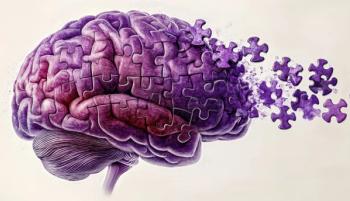
Areas for Future Research
Elderly patients are a heterogeneous population with myriad issues facing them. The group of articles in this Special Report should stimulate thinking, discussion and future research in a variety of areas.
November 2005, Vol. XXII, Issue 13
This Special Report considers a variety of topical concerns for clinicians treating geriatric patients in general, and those with Alzheimer's disease (AD) and other neurodegenerative disorders in particular.
Elders are a heterogeneous population and recommendations regarding the ability of any elderly individual to continue to drive, or their need for an evaluation of driving performance, cannot be made simply on the basis of an age cutoff (e.g., all people 65 and older must have an assessment of their driving performance). In "Older Drivers Revisited," L. Jaime Fitten, M.D., notes that there is also a serious ethical conflict when considering the issue of limiting or terminating the rights of any elderly individual to continue to drive, pitting advocates of the public good against those championing personal freedom and autonomy. Importantly, this debate must be informed by data; unfortunately, too often it is not. Driving may be the "vehicle" for mobility and socialization for many older people; thus, decisions that would impact their privilege to continue to drive would have important implications for quality of life. A loss of driving privilege may interfere with shopping for groceries or picking up essential medicines. Thus, reliable and valid screening evaluations that assess health status and cognition are under investigation to assist health care providers, family members, appropriate governmental agencies (such as state motor vehicle authorities) and the drivers themselves with the difficult decisions pertaining to the right to continue to drive.
Clifford Singer, M.D., and Alison Bahr, M.A., explore disturbances of the usual diurnal sleep-wake cycle in their article "Assessing and Treating Sleep Disturbances in Patients With Alzheimer's Disease." These symptoms are very problematic, resulting in excessive daytime sleepiness and increased caregiver burden. The mechanisms of the sleep disturbances associated with AD are still elusive. Some of them may relate directly to the underlying deposition of neuritic plaques and neurofibrillary tangles, whereas others may be related to environmental issues and comorbid medical conditions. In any event, they deserve prompt evaluation and targeted treatment interventions.
In her report "Developing Technology for People With Dementia," Arline J. Astell, Ph.D., examines a variety of innovative technologies that are being evaluated for their role in assisting patients and caregivers with behavioral management and safety. These applications include monitoring and prevention of wandering, which raise ethical issues pertaining to patient autonomy and freedom of movement. These technologies may improve adherence to prescribed medication regimens and facilitate the use of the telephone in memory-impaired patients. Interactive technologies that take advantage of preserved long-term memories may facilitate the initiation and maintenance of social interactions among patients and between patients and caregivers. These latter technologies may improve quality of life and relieve caregivers of the emotional burden of having to initiate conversations and social interactions in socially withdrawn and apathetic patients.
A variety of prominent neuropsychiatric symptoms are associated with HIV, including significant cognitive impairment. Ewald Horwath, M.D., and Sarah Siris Nash, M.D., provide a review of the "Psychiatric Manifestations of HIV Infection and AIDS." These symptoms occur as a direct result of HIV infection of the brain, as a consequence of opportunistic infections and neoplasms in the immunocompromised patients, metabolic disturbances, and secondary to the medications used to treat HIV and its consequences. Importantly, although the incidence of HIV-associated dementia (HAD) has declined with the introduction of highly active antiretroviral therapy (HAART), patients are living longer and are physically healthier than in the past. Because of this, strategies for the treatment of behavioral and cognitive symptoms in HAD are urgently needed.
Paul F. Malloy, Ph.D., and Patricia A. Boyle, Ph.D., highlight the fact that apathy may be a very important, albeit neglected, target in the pharmacotherapy of AD (and other neurodegenerative and psychiatric disorders) in "Apathy and Its Treatment in Alzheimer's Disease and Other Dementias." They make the important distinction between apathy and dysphoria. An apathetic person is not necessarily depressed; they may just be profoundly amotivational.
The articles in this Special Report review the current "state-of-the art"; importantly, they should stimulate thinking, discussion and future research in important practical areas related to driving, the interpretation and treatment of depression in the context of dementia, sleep disturbances, and applications of innovative technologies.
Acknowledgement
Psychiatric Times would like to extend its gratitude to Dr. Deutsch for his assistance in planning and reviewing this Special Report.
Dr. Deutsch is associate chief of staff for mental health at the U.S. Department of Veterans Affairs Medical Center, Washington, D.C., and also professor and associate chairperson for the clinical neurosciences, department of psychiatry, Georgetown University School of Medicine. Dr. Deutsch is also a fellow of the American College of Neuropsychopharmacology.
Newsletter
Receive trusted psychiatric news, expert analysis, and clinical insights — subscribe today to support your practice and your patients.











